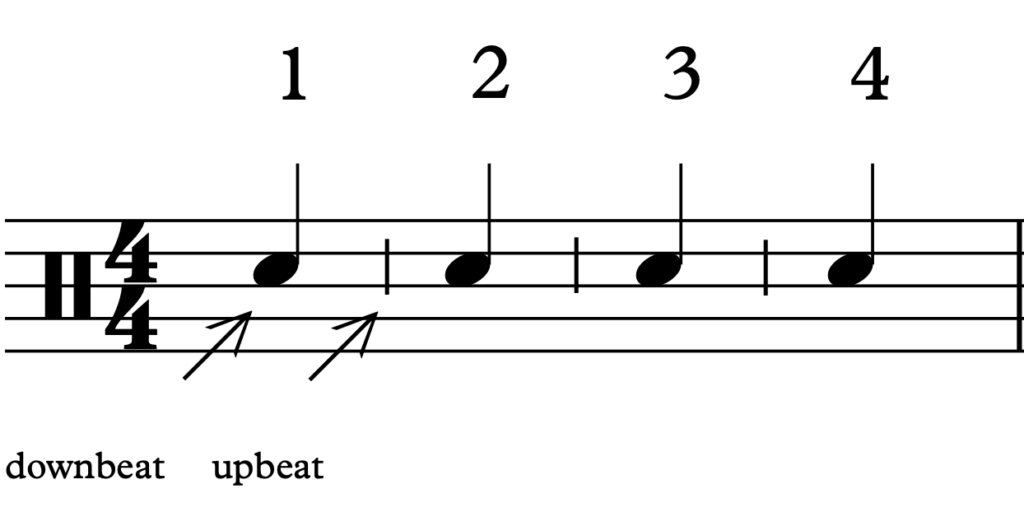Giacomo Pasutto, a professional drummer from Italy, will explain foxtrot music structure.
Matteo: What is the difference between straight tempo, swing, and shuffle?
Giacomo: Trying to write down the differences of the swing and shuffle as rhythmic style is a challenge. They passed down this kind of style from generation to generation by word of mouth. We should keep in mind that every theoretical approach is something that comes close, but not exactly where the definition of swing and shuffle should be. As Marco Di Battista says in his book Improvvisazione jazz consapevole this is also because “we use a European Approach, called Divisive, of the theory to explain styles that find their roots in the African Culture which is based on Additive conception”.
Every transcription, score, or music can also be played with more or less swing or shuffle “feel” that we can’t write down. For example, modern shuffle comping is different from the oldest one in terms of interpretation of the subdivision. It depends also on the musician’s choice and background.
To understand and explain which are the differences between these tempos in indications I’ll offer some examples.
The Straight Tempo
The straight tempo is simply the exact interpretation of a regular beat in terms of feeling and playing a score or music. Imagine that we have a measure of 4/4 and 1 quarter note per beat so if we clap the hands on every quarter note, we will have 4 Claps/Notes in one measure that takes the downbeat and upbeat.  Now, what happens if we want to clap the hands two times at the same distance, in one beat? We will have one clap on downbeat and one clap on upbeat. We call these “eighth notes”, so 8 notes/claps in one measure.
Now, what happens if we want to clap the hands two times at the same distance, in one beat? We will have one clap on downbeat and one clap on upbeat. We call these “eighth notes”, so 8 notes/claps in one measure.
We can check how the notes are regularly subdivided between the downbeat (numbers) and the upbeat (e). So, paying attention to the regular pulsation we can hear the “Straight feel”, a perfect subdivision of the beats that we can play in quadruplet (per beat) so, 16 notes in one measure.

Swing and Shuffle
Now imagine playing 3 eighth notes in one beat. We will have an “Eighth Notes Triplet” - an irregular group/subdivision placed between the downbeat and the upbeat.

If we place a rest on the second note of the triplet we can see the “basic” of the swing/shuffle triplet feel. The shuffle often is written in 12/8.  The Regularity and The Shuffle Feel
The Regularity and The Shuffle Feel
Now comes the hardest part!
We should first say that we can use the terms swing and shuffle to indicate a musical genre. But, here we are talking about swing and shuffle as rhythmic styles, so the differences in drumming are in the comping.
In swing and in shuffle, the strong pulsation is always on 2 and 4 of the measure.
For example, when playing the drums in the shuffle, this pulsation is strongly accented on the snare. The duration of the first note is something like two times of the third note. Nevertheless, it depends on genres: for example, in modern shuffle rock/blues the pulsation is more “regular”.
In the swing comping, instead, the 2 and 4 are accented on the Hi-Hat while snare keeps the “suspended feel” with free comping improvisation.

And also in swing rhythm, the pulse is divided unequally. Therefore, certain subdivisions, typically either the eighth note or the sixteenth note subdivisions, alternate between long and short durations.
The “regularity” of the subdivision depends on the musician’s background, style, and musical genre. It can be changed by delaying the 3rd note of the triplet (the upbeat) close to the next downbeat. Here is a link where you can see all the differences in terms of ratio between the notes.
Here are two examples of “regular” triplet pulsation of the shuffle/rock comping:
In terms of musician’s choice, in “Pride and Joy”, you can hear how Stevie tries to “rag” the time while he’s singing, just playing a delayed chord on the upbeat with the guitar.
Now, if we take a look at this Jazz Shuffle record of 1961 we can easily listen how they delay the 3rd note of the triplet (the upbeat), close to the next downbeat. We can also observe how the swinging feel of soloists can coexist with the shuffle comping played by the drummer Philly Joe Jones.
Heads Up For Music Nerds: At min 2:50 something happens. Philly starts to play the Ride Cymbal on every quarter notes and the snare only on the 4th beat leaving more space for the Wynton Kelly’s solo. You can easily check how the pulsation becomes less “ragged”, and more of a “regular” triplet.
Here’s another example of Jazz Shuffle played by the Roy Hargrove’s Big Band where you can hear the 3d notes delayed and the strong 2 and 4 accents on the snare.
The Pulse Perception
Often in the traditional swing, the Rhythm Section - the core group of instruments that plays the accompaniment - in the introduction of the theme does what we call “plays in 2” or half bass, a kind of halved time where the accent seems to be on the 1 and 3.
Let me give some definitions here:
- Playing in 4 or Walking Bass = to play every beat of the measure;
- Playing in 2 or Half Bass = to play half beat of the measures (example: 1 and 3 or 2 and 4, in a 4/4 time signature).
In the following example, you will listen to how in the first minute the bass movement is on 1 and 3 (plays in 2) but the left-hand piano plays the 2 and 4. At the minute 1:14 starts the B Section where the bass plays on all 4 beats and after that, they repeat again Section A with the bass on 1 and 3. But you should keep in mind that the pulsation is again on 2 and 4. After that, they will repeat the chorus all in 4 till the end, also on the trombone solo.
Matteo: What is the accent in music?
Giacomo: The accent, also called stress, is a momentary emphasis on a particular rhythmic or melodic detail. In metrically organized music, accents serve to articulate rhythmic groupings. This happens especially in music used in dancing, where the regular accentuation facilitates the patterning of steps. Usually, the heaviest accent falls on the first beat of the measure. The matter of fact, it is the accent that determines where the measure begins.
Matteo: These are some examples of foxtrot music. The first is a more “classic style” and the other derives from modern popular music:
Is there any difference in terms of foxtrot music theory between the “big band swing” music and the modern one?
Giacomo: The first differences I noticed between traditional and the modern one are in the harmonic progression.
In other words, the modern one has pop melody and pop harmonic progression rearranged and played in “jazz” style. There are a lot of different music elements mashed up, that recall the second line style, the ragtime, and dixieland. The traditional ones are standard jazz songs, more complex in terms of arrangement, harmony, and structure. It also has articulated movement of the brass section in a perfect Big Band Style.
One of the most important things that I noticed is that the modern song is “played in 2” and doesn’t go in 4 so the bass plays on every beat of the measure.
Here is another example of the differences about the half bass and walking bass:
We can see how John Clayton plays in 2 (half bass) at min 0:42 when Clayton says “I get my bass and we went for a walk” and starts to play in 4 (walking bass) and you can feel the strongest 2 and 4 pulsation.
Matteo: As a musician, do you think we should dance in two different ways, placing the accent in different moments if we are dancing the classical swing or the modern one?
Giacomo: Honestly, I think I can not say what is best for a dancer to do. Nevertheless, in my experience as a musician in the ballrooms, I have always noticed that it is important to know a little about the basis of the dance. You need to understand what the dancers need. At the same time, I think that even the dancers should try to get a little closer to the world of musicians. They need to understand to the origins of the music they are dancing to.
I believe that “the end justifies the means.” For example, to facilitate reading of the scores for big bands, when I was at the Conservatory, the director said to visualize the groups of notes in blocks on one and three. But this does not mean that the strong pulsation is on the one and the three.
So, if you feel the need to "visualize" the one and three in order to count the steps or teach, I don’t think it is entirely wrong. Try to remember though that the natural pulsation of that kind of music is on the two and four. Therefore it would be appropriate to emphasize the nature of that style.
I think any kind of music-related activity should pay attention to what the musicians are playing. Equally, the musicians should pay attention to the needs of those who are interacting.
Music, as we know, is a language just like dance is. Therefore, communication is essential and for good communication, it’s better to talk the same language.
Reference list:
Marco Di Battista, (2014) Improvvisazione jazz consapevole (volume 1) Jazz Convention
If you have more questions for Giacomo, you can follow him on:





